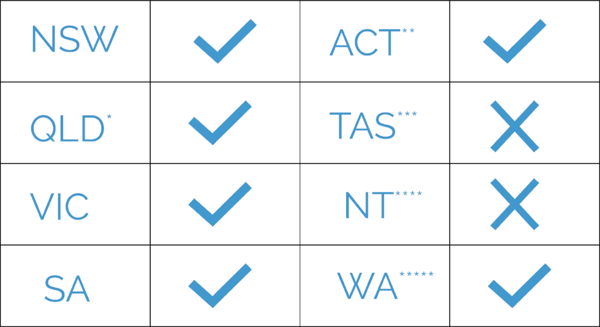Dare to compare your electricity bill?

Take charge of your power bill with our hot tips on comparing electricity bills.
In the last decade electricity prices have increased by more than 60 per cent and the average Australian is paying $1524 annually.
When was the last time you looked at your electricity bill other than when you forked over your hard earned money?
Comparing electricity plans can be confusing. There are various websites that offer comparisons, and an excessive amount of plans to choose from, where do you begin?
We have some tips to help you choose the right plan for you and your household.
Before you start your electricity comparison - know your household
Before you can begin to compare electricity plans, it’s good to have an understanding of your household’s energy usage and the times you’re using electricity the most. Even get to know your home appliances and how and when you use them.
The easiest way to see how much energy your household is using to to look at your last electricity bill. Your electricity bill will list your total energy usage for your billing period. You can compare what the average electricity consumption is in your area with the consumption listed on your electricity bill to see how your household compares. However, this is just a rough estimate.
Consider adding a home energy management system like Reposit First.
With a smart energy management system, like Reposit First you can monitor your household’s energy usage in real-time, and even get predictions for your household energy usage. Letting you plan the best times to use energy and still reduce your electricity bills.
Knowing how much energy your household uses and when, can result in some serious savings on your electricity bill - even before you shop around for the best value electricity plan.
Learn more about how Reposit First can help you or get in touch to find out how you can capitalise on your investment, track your energy consumption and lower your bills.
How are you charged under your current plan?
Before you start researching to find a better value electricity plan you need to check what kind of tariff you’re currently on. Tariffs are the pricing structure your energy company charges for providing energy. There are a variety of different tariff types.
- a single flat rate (same rate at all times)
- a multi-flat or block tariff (may include stepped pricing that decreases the more power you use)
- a flexible or time-of-use (TOU) tariff (prices vary based on different times of the day/night)
- a lower price at night for heating hot water, for example, with a single flat rate for everything else. (This is an off-peak rate that is linked to a specific appliance that only works at off-peak times and may be referred to as a 'controlled load' tariff on your bill.)
Your tariff will also depend on what type of meter you have and where you live. For time-of-use or flexible tariffs you need to have a smart meter. If you have an older 'accumulation' meter you'll likely be on a flat or block tariff.
You're also charged a daily supply charge regardless of your tariff.
Can you change your electricity company?
Depending on where you live you might not have a lot of choice of retailers.

*Yes, if you live in South-East Queensland **Yes, but there's little variation in pricing as this is a regulated market ***No (Aurora Energy is your retailer) ****No (Power and Water Corporation is your retailer) *****Yes, in some places, but there is little variation in pricing as this is a regulated market
When comparing deals, what should you consider
- The rate per kWh
- Fixed supply charges
- Discounts - do these apply to the whole bill (fixed supply charges and usage charges) or are they for usage only? This can make a big difference to your bill and savings. Some discounts are estimates that assume that you pay your bill on time and that you pay by a certain payment method, such as direct debit
- Late fees
- Billing – how often do you receive your bill and how can you pay?
- Other fees – for example, fees for receiving paper bills or for paying with a credit card
- Length of contract – are there any exit fees or transferring fees when moving house?
- Other terms and conditions, read the fine print for any hidden extra fees
- Some discounts or savings are the first year only but may include a $50 credit on your first bill. So if the plan is for more than one year, the savings are probably not the same for the following year/s
How to switch electricity retailer
- Look around, if you find a better deal than what you are on now, contact your current retailer and see if they'll match it or do better. If they can't, then it's a good time to check any exit fees
- The switching process may take up to three months before you’re on a new contract. This can also depend on your retailer, distributor and where you are in your billing cycle.
- Your electricity supply won't be interrupted when you change contracts or move to a new retailer
Know your rights
Don’t be afraid to ask lots of questions before switching electricity plans and signing a new contract.
Generally you have a cooling off period which begins on the date you get information about your electricity contract. The cooling off period should be at least five to ten days.
You can change your mind and cancel the contract within this period so you won’t be charged extra fees.
